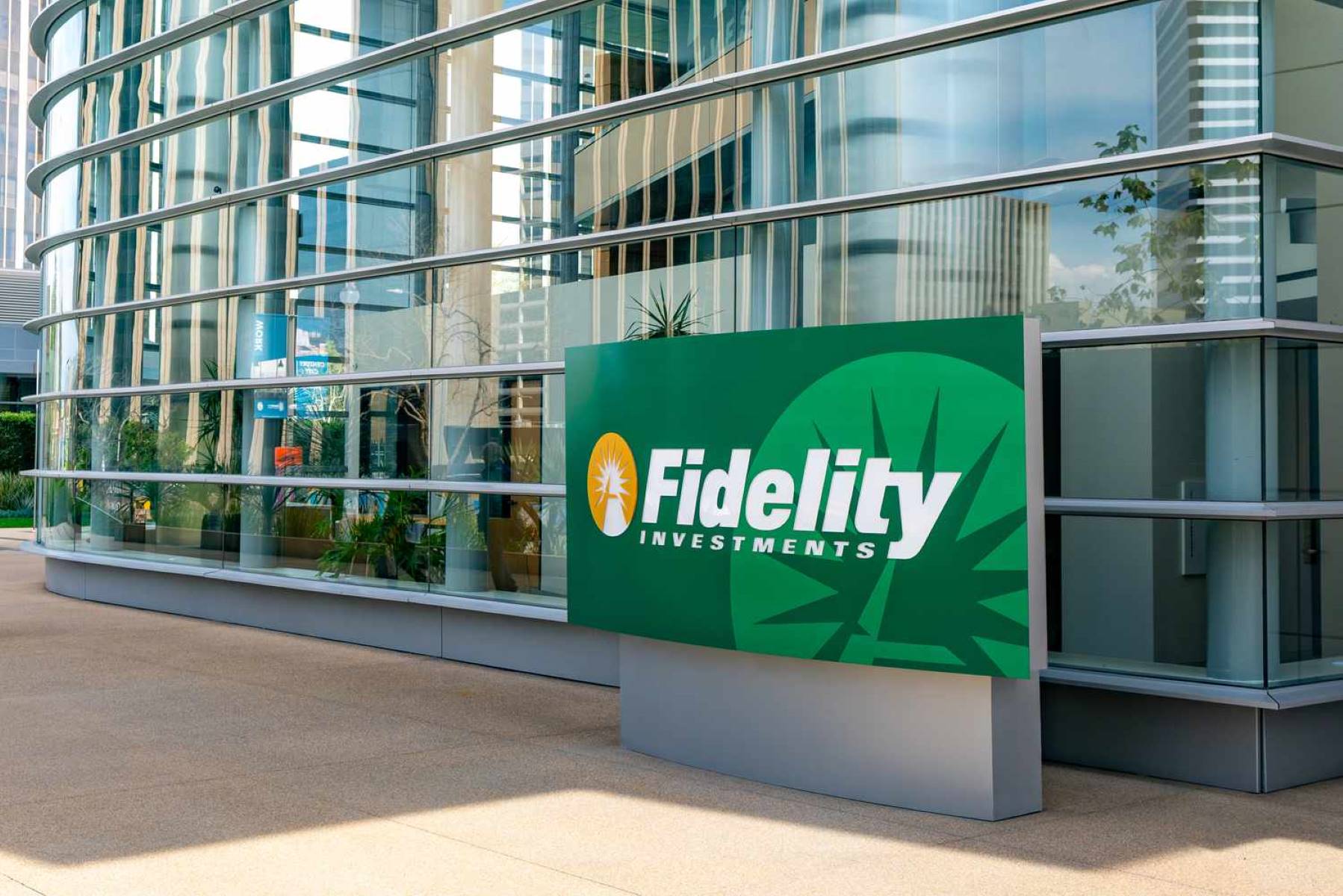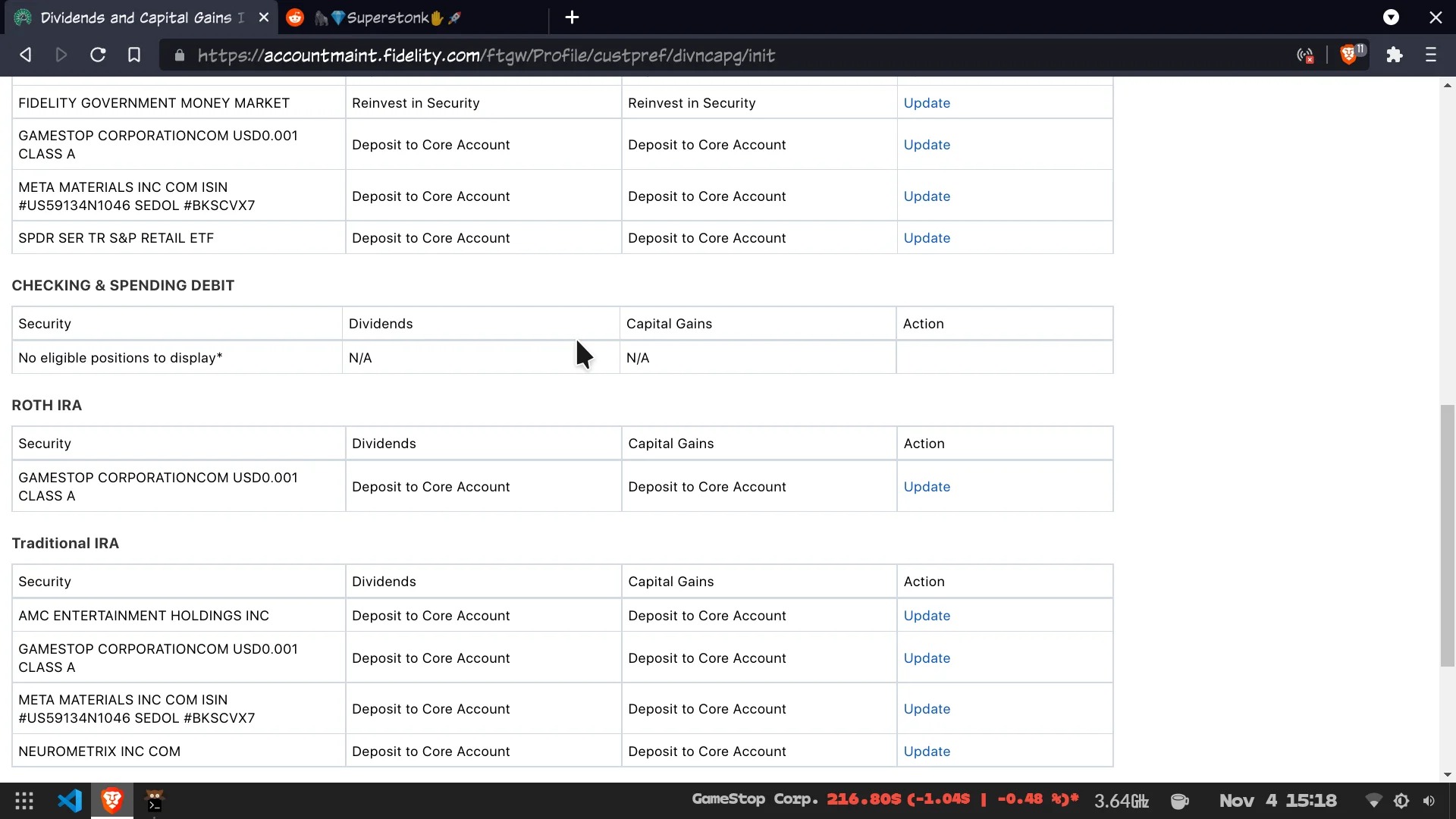

Finance
How To Setup Automatic Investment In Fidelity
Published: October 17, 2023
Learn how to setup automatic investments in Fidelity and take control of your finances for a more secure financial future.
(Many of the links in this article redirect to a specific reviewed product. Your purchase of these products through affiliate links helps to generate commission for LiveWell, at no extra cost. Learn more)
Table of Contents
- Introduction
- Step 1: Create a Fidelity Account
- Step 2: Set Up Automatic Investment
- Step 3: Choose Your Investment Options
- Step 4: Determine the Investment Amount
- Step 5: Select the Frequency of Investments
- Step 6: Review and Confirm Your Automatic Investment Plan
- Step 7: Monitor and Adjust Your Automatic Investments
- Conclusion
Introduction
Setting up automatic investment in Fidelity is a smart way to take control of your finances and make your money work for you. By automating your investment process, you can save time, reduce the risk of emotional decision-making, and potentially enhance your long-term returns.
In this guide, we will walk you through the steps to set up automatic investment in Fidelity, one of the leading financial service providers. Whether you are a beginner looking to start investing or a seasoned investor wanting to streamline your investment strategy, this article will help you navigate the process with ease.
Automating your investments can offer several benefits, such as eliminating the need for regular manual transactions, ensuring consistent contributions, and taking advantage of market fluctuations without constant monitoring. With Fidelity’s robust online platform, you have the flexibility to customize your automatic investment plan according to your financial goals, risk tolerance, and investment preferences.
Before we dive into the steps, it’s important to note that while automatic investment is a convenient tool, it does not guarantee profits or protect against losses in a declining market. It is essential to conduct thorough research, assess your risk tolerance, and consult with a financial advisor to ensure your investment strategy aligns with your individual circumstances.
Now, let’s get started on setting up automatic investment in Fidelity!
Step 1: Create a Fidelity Account
To begin setting up automatic investment in Fidelity, you need to have a Fidelity account. If you’re already a Fidelity customer, you can skip this step and proceed to the next one.
If you don’t have a Fidelity account, don’t worry! Creating one is a straightforward process:
- Visit the Fidelity website at www.fidelity.com.
- Click on the “Open Account” button, usually located at the top right corner of the homepage. This will take you to the account opening page.
- Select the type of account you want to open. Fidelity offers a variety of accounts, including individual brokerage accounts, retirement accounts (such as IRAs), education savings accounts, and more.
- Provide the required personal information, including your name, address, Social Security number, and employment details.
- Review the terms and conditions, and if you agree, click on the checkbox to indicate your acceptance.
- Complete any additional steps or forms as prompted by the website.
- Submit your application.
Once you have submitted your application, Fidelity will process it and verify your information. This may take a few business days. You will receive confirmation via email once your account is successfully opened.
Having a Fidelity account is vital as it allows you to access all the features and resources available on the platform. It also ensures that your investments and funds are securely managed and gives you convenient access to your account information.
Now that you have a Fidelity account, let’s move on to the next step: setting up automatic investment.
Step 2: Set Up Automatic Investment
Setting up automatic investment in your Fidelity account is a straightforward process that can be done online. Once you have logged into your account, follow these steps to get started:
- Navigate to the “Accounts & Trade” tab on the Fidelity website. This can usually be found at the top menu bar.
- Select the account for which you want to set up automatic investment. This can be your individual brokerage account, IRA, or any other eligible account.
- Click on the “Transact” or “Move Money” option, depending on the Fidelity website’s layout.
- Choose the “Automatic Investments” or “Automatic Investing” option from the drop-down menu.
- Follow the prompts to set up your automatic investment plan.
During the setup process, you will be prompted to provide specific details for your automatic investment plan. This includes selecting the investment options, determining the investment amount, and setting the frequency of investments.
Fidelity offers a wide range of investment options to choose from, including mutual funds, exchange-traded funds (ETFs), stocks, bonds, and more. You can tailor your investment strategy to align with your financial goals and risk tolerance.
When selecting the investment amount, you have the flexibility to choose a fixed dollar amount or a percentage of your account balance. It’s essential to consider your financial circumstances and investment objectives while determining the appropriate investment amount.
In terms of the frequency of investments, Fidelity allows you to customize how often you want funds to be automatically invested. You can choose options such as weekly, bi-weekly, monthly, or quarterly, based on what suits your needs.
Once you have entered all the necessary information and preferences, review your plan to ensure accuracy. You may also have the option to set specific start and end dates for your automatic investment plan, depending on your preferences and goals.
Finally, after reviewing and confirming your automatic investment plan, submit the details. Fidelity will process your request, and your automatic investments will begin according to the specified frequency and investment amount.
It’s important to note that Fidelity may have certain eligibility requirements and restrictions for automatic investment plans. Make sure to review any terms and conditions or fee schedules associated with your specific account type and investment options.
With your automatic investment plan now set up, you can sit back and let Fidelity take care of investing on your behalf. In the next step, we will discuss how to choose your investment options.
Step 3: Choose Your Investment Options
Choosing the right investment options is a crucial step in setting up your automatic investment plan in Fidelity. Selecting the appropriate investments allows you to align your portfolio with your financial goals, risk tolerance, and investment strategy. Here’s how you can choose your investment options:
- Research and evaluate different investment options: Fidelity offers a vast selection of investment vehicles such as mutual funds, ETFs, stocks, bonds, and more. Take the time to research and understand the investment options available to you. Consider factors such as historical performance, risk profile, fees, and asset allocation before making your decision.
- Determine your investment objectives and risk tolerance: Clearly define your investment objectives, whether they are long-term growth, income generation, or capital preservation. Assess your risk tolerance, which is your ability and willingness to endure market fluctuations. This information will help guide you in selecting investments that align with your goals and risk profile.
- Diversify your portfolio: It is essential to diversify your investments to mitigate risk and potentially enhance returns. Consider spreading your investments across different asset classes, industries, and geographical regions. Diversification can help buffer against market volatility and decrease the impact of any single investment’s performance on your overall portfolio.
- Consider professional advice: If you are unsure about which investment options to choose or need guidance in creating a well-rounded portfolio, it may be beneficial to seek advice from a financial advisor. An experienced professional can assist you in identifying suitable investments based on your goals and risk tolerance.
- Review and reassess periodically: The investment landscape is dynamic, and your financial goals may evolve over time. Regularly review and reassess your investment options to ensure they remain aligned with your objectives. Make adjustments as necessary to optimize your portfolio’s performance and adapt to changing market conditions.
When selecting your investment options, it’s important to remember that past performance is not indicative of future results. Conduct thorough research, assess your risk appetite, and consider seeking professional advice to make informed decisions.
In the next step, we will discuss how to determine the investment amount for your automatic investment plan.
Step 4: Determine the Investment Amount
When setting up your automatic investment plan in Fidelity, one important decision to make is determining the investment amount. This is the amount of money that will be automatically invested at each designated interval. Here are some steps to help you determine the investment amount:
- Assess your financial situation: Before deciding on the investment amount, take a thorough look at your current financial situation. Consider your income, expenses, and any other financial obligations you may have. It’s important to ensure that the investment amount you choose is manageable and won’t negatively impact your overall financial well-being.
- Set realistic financial goals: Determine your investment objectives and set realistic financial goals. Are you saving for retirement, a down payment on a house, or a child’s education? Having clear goals will help you determine how much you need to invest and for how long.
- Consider your risk tolerance: Assess your risk tolerance when deciding on the investment amount. Your risk tolerance is your ability to withstand fluctuations in the market. If you have a higher risk tolerance, you may be comfortable investing a larger amount. Conversely, if you have a lower risk tolerance, you may prefer to invest a smaller amount.
- Review your investment timeframe: Consider the length of time you plan to invest. If you are investing for the long term, you may be able to invest larger amounts periodically. However, if you have a shorter investment timeframe, you may need to adjust the investment amount accordingly.
- Utilize dollar-cost averaging: Dollar-cost averaging is an investment strategy that involves consistently investing a fixed amount of money at regular intervals, regardless of market conditions. This strategy can help smooth out the impact of market volatility and potentially enhance long-term returns.
- Seek professional advice: If you’re uncertain about determining the investment amount or need guidance in aligning it with your financial goals, consider consulting a financial advisor. They can provide personalized recommendations based on your unique circumstances and help you make informed decisions.
Remember, the investment amount is not set in stone and can be adjusted over time. Regularly review your investment plan and make modifications as needed to stay on track toward your financial objectives.
Next, we will discuss how to select the frequency of your automatic investments.
Step 5: Select the Frequency of Investments
When setting up your automatic investment plan in Fidelity, you have the flexibility to choose the frequency of your investments. The frequency determines how often funds will be automatically invested in your chosen investment options. Here’s how you can select the frequency:
- Consider your financial situation: Take into account your income and budget when deciding on the investment frequency. Assess how much you can comfortably allocate toward investments without straining your finances.
- Evaluate your investment goals: Consider your investment objectives and the time horizon for reaching them. If you have long-term investment goals, such as retirement savings, you may opt for a more frequent investment frequency to take advantage of compounding returns. On the other hand, if you have short-term goals, you may prefer less frequent intervals.
- Assess your investment options: Different investment options may have specific requirements or restrictions on the frequency of investments. Make sure to review any guidelines or limitations associated with the investment options you have chosen.
- Utilize dollar-cost averaging: Dollar-cost averaging is a strategy where you invest a fixed amount at regular intervals, regardless of market conditions. By selecting a frequent investment frequency, such as monthly or quarterly, you can take advantage of dollar-cost averaging and potentially reduce the impact of market volatility on your investments.
- Consider your risk tolerance: Your risk tolerance can also impact your choice of investment frequency. If you have a higher risk tolerance, you may be comfortable with more frequent investments. However, if you have a lower risk tolerance or prefer a more hands-off approach, you may opt for less frequent intervals.
It’s important to note that the investment frequency can be adjusted as needed. Life circumstances and financial goals may change over time, and you may need to modify the investment frequency to align with those changes.
Fidelity offers various intervals for automatic investments, such as weekly, bi-weekly, monthly, or quarterly. Choose the frequency that best suits your needs and preferences.
In the next step, we will discuss how to review and confirm your automatic investment plan.
Step 6: Review and Confirm Your Automatic Investment Plan
After setting up the investment options and determining the investment amount and frequency, it’s crucial to review and confirm your automatic investment plan in Fidelity. Taking the time to thoroughly review your plan ensures that it aligns with your financial goals and preferences. Follow these steps to review and confirm your automatic investment plan:
- Review your investment options: Double-check the investment options you have chosen. Ensure that they align with your risk tolerance, investment objectives, and time horizon. Consider any recent market trends or changes that might impact your selected investments.
- Verify the investment amount: Confirm that the investment amount you have entered is appropriate for your financial situation and goals. Ensure that it is an amount you can comfortably afford to invest regularly without straining your budget.
- Double-check the investment frequency: Review the frequency of your automatic investments. Make sure it aligns with your desired strategy and investment goals. Consider the benefits of dollar-cost averaging and how frequently you want to contribute to your investments.
- Assess start and end dates: If applicable, verify any start and end dates you have selected for your automatic investment plan. Ensure that they align with your desired timeframe for investing.
- Consider any additional options or features: Fidelity may offer additional options or features to enhance your investment plan, such as dividend reinvestment or tax-efficient investing options. Evaluate these offerings and consider whether they align with your goals.
- Consult with a financial advisor if necessary: If you have any doubts or require advice, consider consulting with a financial advisor. They can provide guidance specific to your financial situation and help ensure that your investment plan is well-suited to meet your objectives.
- Once you have thoroughly reviewed your automatic investment plan and made any necessary adjustments, confirm and submit the plan. Fidelity will process your request, and your automatic investments will begin according to the specified parameters.
Remember that automatic investment plans are not set in stone and can be modified or canceled at any time. It’s important to regularly monitor and assess your investments to ensure they continue to align with your goals and adjust as needed.
In the final step, we will discuss how to monitor and adjust your automatic investments over time.
Step 7: Monitor and Adjust Your Automatic Investments
Once you have set up your automatic investment plan in Fidelity, it’s important to actively monitor and periodically adjust your investments to ensure they remain aligned with your financial goals. Here are some steps to help you effectively manage your automatic investments:
- Regularly review your investment performance: Keep a close eye on the performance of your selected investments. Review how they are performing relative to their benchmarks and consider any changes in market conditions that might impact their future prospects.
- Stay informed with market research and news: Stay up-to-date with market research and news that may impact your investment portfolio. Consider subscribing to market newsletters, financial publications, or utilizing online resources to gain insights into economic trends and potential investment opportunities.
- Assess your investment objectives: Periodically reassess your investment objectives to ensure they remain relevant. Life circumstances and financial goals may change over time, so it’s important to make any necessary adjustments to your automatic investment plan accordingly.
- Consider rebalancing your portfolio: Over time, the performance of different investments within your portfolio may vary, leading to an imbalanced asset allocation. Regularly rebalance your portfolio by adjusting the allocation of investments to ensure that it aligns with your desired risk profile.
- Take advantage of market opportunities: Keep an eye out for potential investment opportunities that may arise due to market fluctuations. If you come across investments that align with your goals and offer favorable risk-reward profiles, consider making adjustments to your automatic investment plan to take advantage of these opportunities.
- Consult with a financial advisor: If you are uncertain about making investment decisions or need guidance, consider seeking input from a financial advisor. They can help you assess your investment performance, provide tailored recommendations, and offer valuable insights to optimize your portfolio.
- Regularly evaluate fees and expenses: Be aware of any fees and expenses associated with your investments and automatic investment plan. Regularly assess whether the costs are appropriate for the value provided and consider making adjustments if necessary.
Remember, investing involves risks, and past performance is not indicative of future results. It’s important to stay vigilant, remain informed, and make well-informed decisions based on your financial circumstances and risk tolerance.
By actively monitoring and periodically adjusting your automatic investments, you can optimize your investment strategy and increase the likelihood of achieving your financial goals.
As a final note, always prioritize your financial well-being and consult with professionals as needed. With this comprehensive guide, you are well-equipped to set up and manage your automatic investment plan in Fidelity.
Happy investing!
Conclusion
Setting up automatic investments in Fidelity can be a game-changer for your financial future. By automating your investment process, you can save time, reduce emotional decision-making, and potentially enhance your long-term returns. In this guide, we have covered the essential steps to help you set up automatic investment in Fidelity with confidence.
We began by creating a Fidelity account if you didn’t already have one. Then, we walked through the process of setting up automatic investment, choosing your investment options, determining the investment amount, and selecting the frequency of investments.
Remember that selecting the right investment options is crucial. Consider your financial goals, risk tolerance, and the importance of diversifying your portfolio. Take advantage of professional advice if needed.
Once your automatic investment plan is in place, it’s important to regularly review and monitor your investments. Assess the performance, consider rebalancing your portfolio, and stay informed with market research and news. Adjust your plan as necessary to keep it aligned with your changing financial objectives and market conditions.
Finally, always prioritize your financial well-being. Regularly evaluate fees and expenses, stay informed about market opportunities, and consider consulting with a financial advisor if you need guidance.
Setting up automatic investment in Fidelity is a great step towards achieving your financial goals. With discipline, ongoing monitoring, and adjustments as needed, you are positioned to build a strong and sustainable investment portfolio.
Now that you have the knowledge, take action and start setting up your automatic investment plan in Fidelity. Your financial future awaits!














